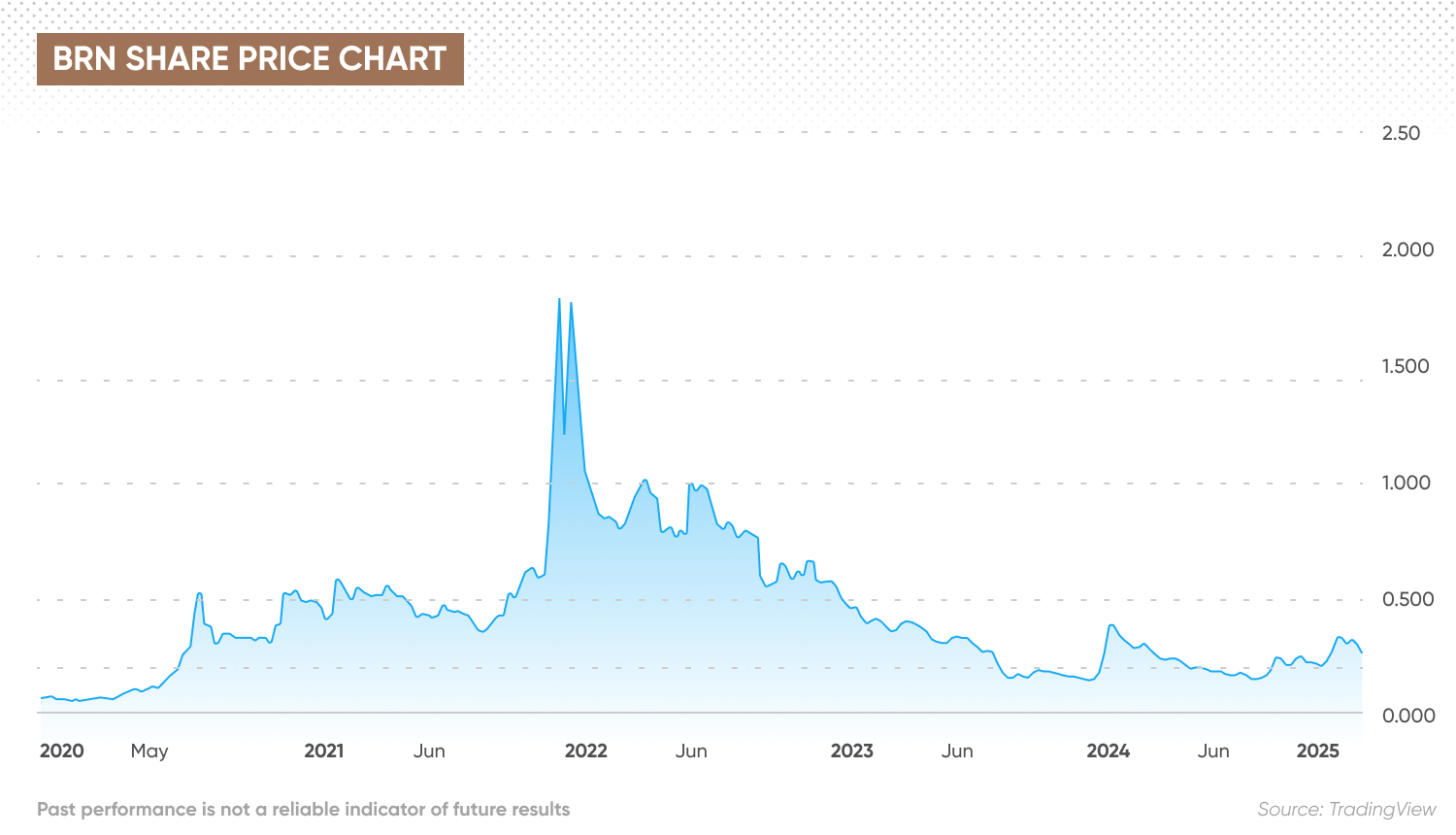BrainChip stock forecast: Will BRN shares gain in value as the edge AI market is predicted to grow to $70bn 2025?
We look at the latest BrainChip stock forecast analysis to see if the share price has bottomed from 2022’s losses.
The share price for BrainChip (BRN), a company developing software and hardware for artificial intelligence (AI) and machine learning, is attempting to break out after bottoming in November.
The stock, which is listed on the Australian Stock Exchange (ASX) has fallen by 5.7% in the past year, but has gained 23.3% since 10 November.
Will the BRN stock price continue to rebound, or is it set to pull back again?
In this article, we look at the company and some of the latest BrainChip stock predictions.
What is BrainChip?
BrainChip Holdings was founded in July 2004 in Australia. It is expert in AI, semiconductor design, software development and technology, with teams in California, France, India, and Australia.
The company is developing computing edge AI on-chip processing and learning. Edge AI combines AI with edge computing – data processing done on site or nearby to reduce the need for processing capacity in a remote data centre.
“BrainChip’s first-to-market neuromorphic processor IP, Akida™, mimics the human brain to analyse only essential sensor inputs at the point of acquisition – processing data with unparalleled efficiency, precision, and economy of energy. Keeping AI/ML local to the chip and independent of the cloud dramatically reduces latency while improving privacy and data security,” according to the company’s website. Edge devices with AI are predicted to become a $70bn market by 2025.
BrainChip Holdings went public on the ASX in November 2011. The company was incorporated in the US as BrainChip Inc. in 2013. The two entities merged and the company was reinstated on the ASX in September 2015.
BrainChip stock falls in tech selloff
The BrainChip share price reached a closing high of A$1.76 a share on 21 January 2022 and after a dip approached that high again to close at A$1.74 on 4 February.

The development of AI-related technology – such as autonomous vehicles, Internet of Things (IoT) devices, robotics and drones – accelerated during the Covid-19 pandemic, increasing the attractiveness of BrainChip’s stock for investors.
But the BRN stock price fell to A$0.91 by mid-April, as technology stocks sold off under pressure from rising inflation and interest rates, and then bounced up to A$1.17 in May. The stock retreated to A$0.84 on 1 July and saw one more spike above A$1.18 later in the month before turning lower.
The share price dropped from A$0.85 on 27 October to A$0.67 on 28 October, after BrainChip warned of the impact of the technology sector slowdown:
The company announced that it ended the September quarter with US$24.6m in cash, down from $28.4m at the end of the second quarter but up from $23.9m in the third quarter of 2021. Operating cash flow rose to $3.8m from $2.8m in the previous quarter. BrainChip’s revenue from customers totalled $100,000, down from $1.2m in the second quarter but unchanged year on year.
The stock fell to A$0.62 on 4 November. It then began to make gains, reaching A$0.74 at the end of December.
BrainChip has partnerships with some of the world’s biggest semiconductor chip producers, with Renesas developing a chip using BrainChip’s spiking neural network (SNN) technology and BrainChip joining the Intel Foundry Services (IFS) ecosystem alliance in December.
“Partners in this alliance collaborate with IFS to enable designers to access high-quality IPs, supporting their design needs and project schedule, while optimising for performance, power and area,” according to the announcement.
Will this opportunity help to drive the BrainChip share price higher? Where is the stock likely to trade in the year ahead? What is a realistic BrainChip stock forecast for investors to consider?
BrainChip stock forecast: Will the share price continue rising?
The short-term BrainChip stock forecast from data analytics service StockInvest.us indicated that the share price could fall further: “Given the current short-term trend, the stock is expected to fall -24.00% during the next 3 months and, with a 90% probability hold a price between A$0.353 and A$0.570 at the end of this 3-month period. Do note, that if the stock price manages to stay at current levels or higher, our prediction target will start to change positively over the next few days as the conditions for the current predictions will be broken.”
Technical analysis from TradingView at the time of writing (3 January) suggested that the stock was a buy, with the simple and exponential moving averages out to 50 days showing bullish signals, along with the volume weighted moving average and Hull moving average. The moving average convergence divergence (MACD) showed a buy signal, while the relative strength index (RSI) was neutral.
For the longer term, at the time of writing the BrainChip share price forecast from machine learning/AI analytics site AI Pickup showed that the stock could average A$0.70 by 2025. That would be down from its BrainChip stock forecast for 2023 of A$1.26. The share price could drop further to A$0.39 by 2030, the prediction indicated.
However, the BrainChip stock forecast for 2025 from algorithm-based forecasting service Wallet Investor projected that the share price could rise to A$1.777 by the end of the year, up from A$1.071 at the end of 2023. Its BRN stock forecast suggested that the price could continue rising to reach $2.438 by December 2027.
When consulting any BRN stock forecast it’s important to keep in mind that algorithm-based predictions are calculated based on past performance and historical data and you should exercise caution. As such, forecasters can and do get their predictions wrong.
You should do your own research and consider market trends, demand and market scope for emerging technology, the company’s latest news and fundamentals. Always remember that your decision to trade depends on your attitude to risk, your expertise in the market, your investment portfolio diversification, and how comfortable you feel about losing money. Never invest more than you can afford to lose.
FAQs
Is BrainChip a good stock to buy?
Whether BRN is a good stock for your portfolio depends on your risk tolerance, portfolio composition and investing strategy. Always do your own research. Remember that past performance is no guarantee of future success.
Will BrainChip stock go up or down?
The direction of the BRN share price will likely depend on the adoption of its edge AI technology as well as overall market sentiment on technology stocks and other asset prices, among other factors.
Should I invest in BrainChip stock?
Whether you should invest in BRN is a personal decision only you can make depending on your personal circumstances. You should do your own research to come up with an informed view of the stock. Remember that past performance is no guarantee of future success. And never invest money you cannot afford to lose.